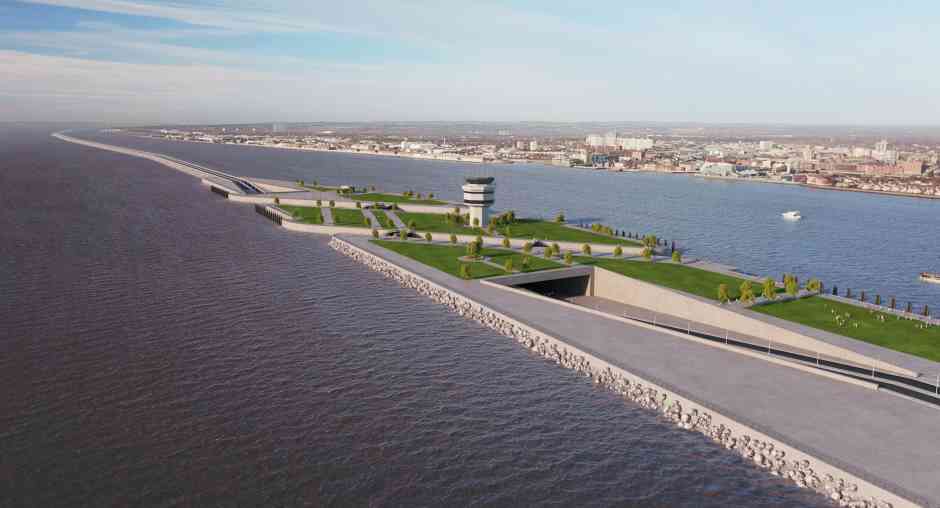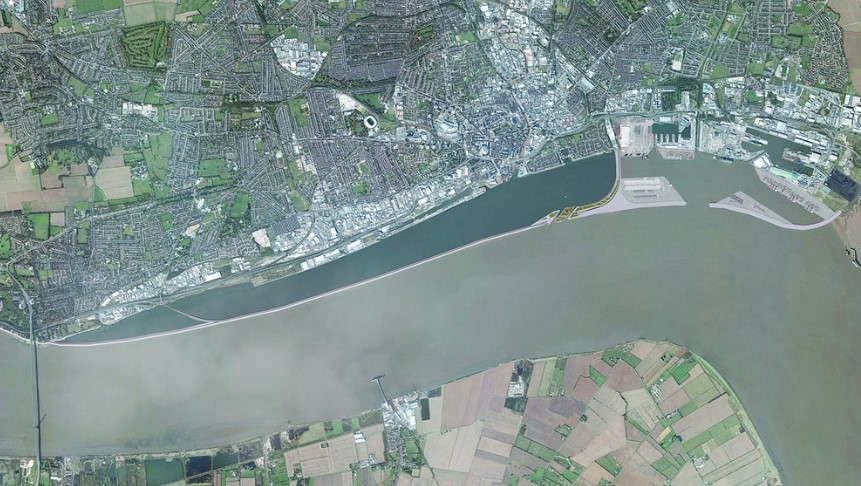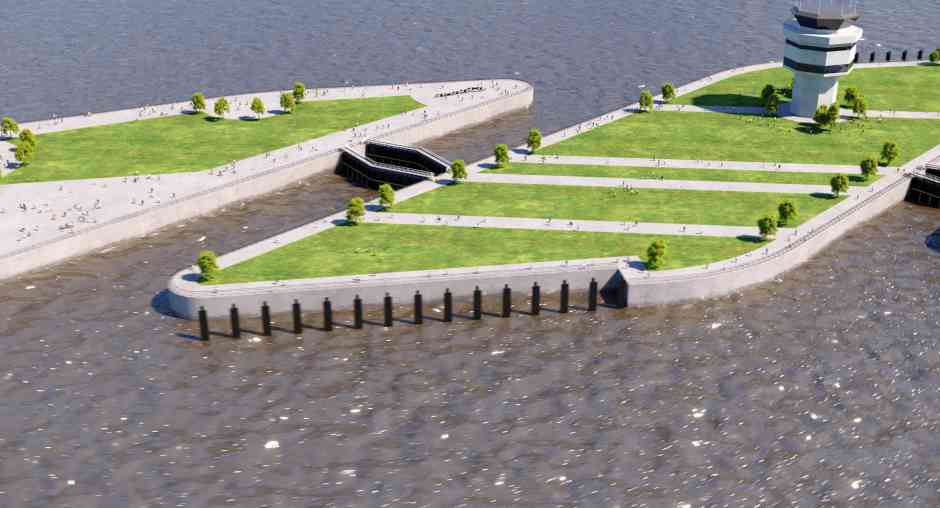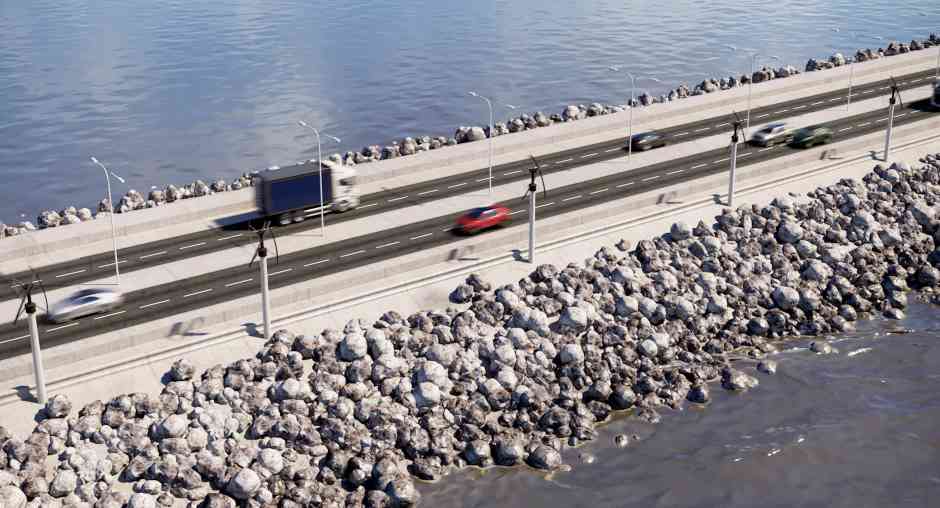From the giant and much celebrated suspension bridge linking the counties of Yorkshire and Lincolnshire; to the assorted oil refineries, power stations and wind turbine factories that line its banks, the Humber estuary is no stranger to impressive feats of engineering.
But a newly proposed flood defence project for the region - Lagoon Hull - could, it’s proponents claim, ultimately become the most ambitious and impactful engineering project of them all.

Hull is of huge economic importance to the UK. Alongside its existing industrial footprint it has, in recent years, become a key hub for the UKs rapidly growing offshore wind industry and is regarded as a critical gateway to Europe for the so-called Northern Powerhouse.
But the city - 90 percent of which stands below the high-tide line - is also unusually vulnerable to coastal flooding, and the damage caused by tidal surges has been a regular feature over the decades. Most recently, in December 2013, a record tidal surge on the east coast, came within centimetres of breaching the city’s existing flood barrier, and devastated the nearby port of Immingham, a key site for UK oil and gas imports. And with similar events expected in the future, city planners are understandably concerned about the increased impact of such events as sea-levels rise.
Officially launched last year (2019) Lagoon Hull began life as a direct response to this continuing threat. But according to the team behind the project - a mix of local business leaders and engineers - it quickly became apparent that it could deliver a triple whammy of benefits for the city: not only alleviating flooding concerns, but also addressing chronic traffic congestion problems, and driving economic growth.
Project manager Paul Hatley, a civil engineer with over two decades of experience of building infrastructure in the Humber estuary, explained that the heart of the proposal - which is expected to cost around £1.5bn – is a six mile wall in the Humber estuary that will create a calm water lagoon to protect the city from flooding and open up a new waterside area. Giant lock gates will be used to impound water and let shipping and boats in and out, and a new four lane road running along the top of the wall will re-route traffic out of the city’s notoriously congested centre. The concept also includes the construction of an outer harbor to support the regions’ rapidly growing offshore energy sector.

It is, said Hatley - who estimates that the scheme could create upto 19000 jobs and add as much as £1bn GDA to the region - much more than a simple flood defence project. “If you put all of those things together what you end up with is a new outer harbor to support the port and the offshore renewables, you address tidal flooding, and you address. transport connectivity. It’s an infrastructure project that has multiple outcomes.”
It’s still early days for the project. A number of what Hatley terms “pre-feasibility” studies have been carried out – largely funded by local businesses to the tune of around half a million pounds - and the team is now focused on drumming up some government interest in the project.
Nevertheless, Hatley reports significant progress in understanding how the scheme might fit into what is an unusually complex environment. “Hull’s quite a unique place in that it’s one of the few places in the UK that is vulnerable to all four types of flooding: pluvial (rainfall), fluvial, groundwater and tidal,” he said. “It is at the centre of all the risk factors, and the project has had to take into account the knock-on effects”
In an effort to understand these effects the team has been working with a number of specialist organisations – including marine consultancy ABPmer - to model the impact of the scheme.
This modelling represented a make or break moment for the project and Hatley was prepared to be disappointed. “We’re used to the idea that if you to build in the flood plain you make it worse, and the immediate assumption from most people was that if you build a structure out in the Humber estuary you’re just going to flood the other side of the estuary. At best I was hoping it would be a fairly neutral impact and at worst we were thinking it could be the end of the project.”

However, the modelling, which was carried out by two separate independent teams, told a very different story, suggesting that, thanks to the complex mix of conditions found in the estuary, an obstruction would actually make water levels lower rather than higher.
What’s more, an additional simulation study carried out by researchers at the University of Hull found that if the lagoon had been in place during the 2013 tidal surge, the city would have had 100 per cent protection with the rest of the estuary seeing an 80 per cent reduction in flood volume. This group also found that if the same tidal surge occurred in 2108, when sea levels are expected to have risen by one metre, the lagoon would continue to provide 100 per cent protection for Hull with the rest of the estuary seeing a 33 per cent reduction in flood volume.
The models have also shown the that lagoon could be used to support efforts to reduce fluvial flood risks by providing large scale storage for storm water from the River Hull and Hull frontage storm outfalls during high water periods. “If the river drains into the lagoon where you can control the water level, then in storm events you can stop the tide coming in and you can enable the river systems to continue to drain more efficiently,” explained Hatley. “If you know that rain is coming into the river and that river’s going to get to your lagoon then you can run the level down in the lagoon on the preceding tide. If you run even a metre off the lagoon, that gives you 5 million cubic metres of storage water and at the next tidal cycle you can empty that. So every 12 hours you can attenuate a fluvial surge event to the tune of 5 million cubic metres.”
As well as estuary modelling, the group has also worked with the Highways agency to simulate the new road’s impact on the city’s traffic. Once again, said Hatley, the results were extremely promising. “The models show that the route is so efficient that everybody naturally migrates to it. 100 per cent of the through traffic goes straight to the new road because its quicker.”

Whilst the studies performed so far justify local enthusiasm for the project, there is still much to be done before it even gets close to the approval stage, and Hatley and the team are now hoping to attract government funding to carry out more exhaustive scientific and modelling work. “Whilst we’ve got two sets of model data that show the same effect we’re a long way from being able to prove definitely that there aren’t other problems,” he said. “We’ve done everything you can do sensibly that tell you that this is worth spending money on, we’re now at the point where we need to take modelling of the river system up to a whole new level. ”
As well as augmenting the work that has already been carried out, this next phase of studies would looksat a host of other factors such as the cyclical longer term changes in the estuary that would need to be properly understood if the lagoon were to be built.
Further modelling would also be needed to understand how the lagoon could be designed to work in harmony with the sensitive natural habitats in the estuary. “If we design things in the right way we can start doing things like supporting the habitat which the estuary may need to support its conservation status,” said Hatley. “For example. Could we create more areas of intertidal mudflat to support migrating bird populations?”
Assuming all of these challenges are met, Hatley estimates that if government were to wade in with the support that’s required to take the project to the next level the project is 10 – 15 years away from fruition.
With Covid-19 currently wreaking havoc on the UK economy it’s perhaps fanciful to think that funding will be forthcoming any time soon. But as Hatley and his team are keen to stress, Lagoon Hull is as much about stimulating economic growth as it is about flood protection. And in the aftermath of the current crisis, the scheme might provide just the kind of economic stimulus that will be required.
More on flood defence from The Engineer
New £1.2bn supercomputer to help Met office prepare for extreme events




Glasgow trial explores AR cues for autonomous road safety
They've ploughed into a few vulnerable road users in the past. Making that less likely will make it spectacularly easy to stop the traffic for...